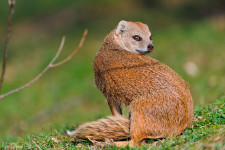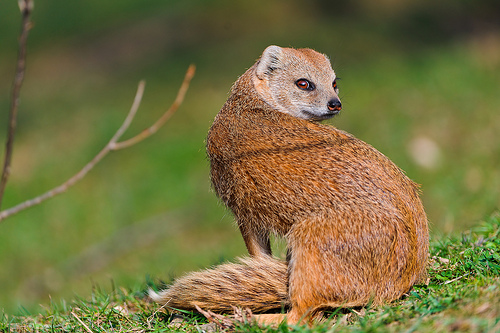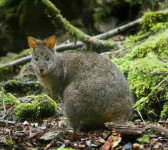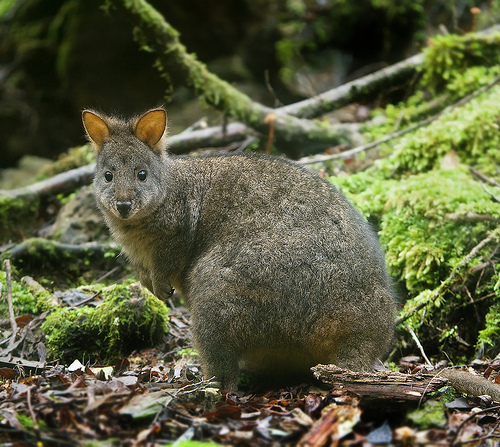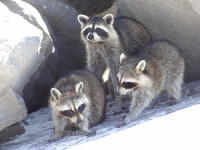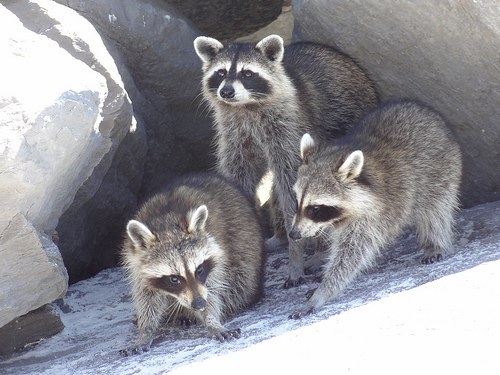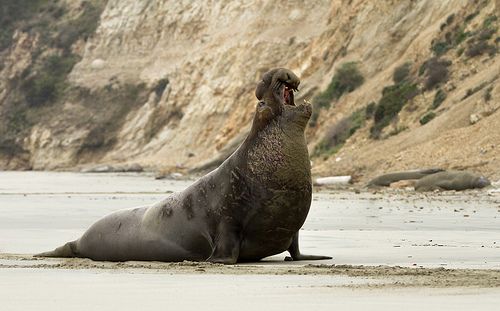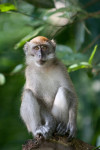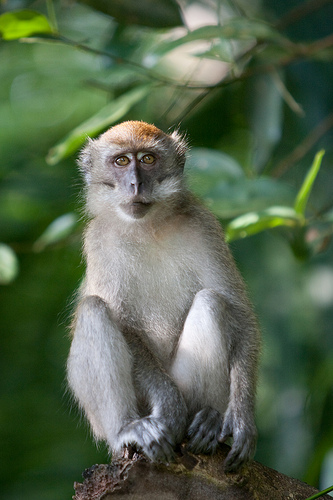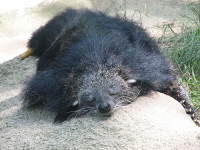
Binturongs are mysterious hide-a-way animals.
- Binturongs are mammals of medium stature found in the southern and southeastern forest habitats of Asia.
- Binturongs are also known as ‘Asian civets’, ‘Malay civet cats’, ‘Asian bearcats’, and ‘bearcats’, however, they are unrelated to both cats or bears.
- The word ‘binturong’ comes from a language no longer used, and as a result its original meaning has been lost; while the scientific name of the animal is Arctictus binturong, from the family Viverridae, the family of viverrids that includes civets and genets.
- Binturongs have fur that is mostly black, with touches of grey, brown and white, and their long tail is prehensile or ‘able to grasp’.
- Binturongs range from 60 to 96 centimetres (24 to 38 inches) in length, with their tail almost as long, and they weigh 10 to 22 kilograms (22 to 49 pounds).
Binturong
Image courtesy of Trisha Shears/Flickr
- Binturongs generally live in trees, and commonly climb up and down them, as they have poor jumping skills.
- The diet of binturongs consists primarily of fish, birds, insects, worms, fruit, and the occasional small mammal.
- Binturongs generally have litters of one to three cubs, that live up to 25 years, and the mammal is preyed on by leopards, snakes and tigers.
- Binturongs are listed as a vulnerable threatened species, due to poaching, hunting for food purposes, and habitat losses.
- Binturongs or not commonly seen in their natural habitats, and are often only recorded by photography traps.
Bibliography:
Binturong, 2013, A-Z Animals, http://a-z-animals.com/animals/binturong/
Binturong, 2015, San Diego Zoo, http://animals.sandiegozoo.org/animals/binturong
Binturong, 2015, Wikipedia, http://en.wikipedia.org/wiki/Binturong






